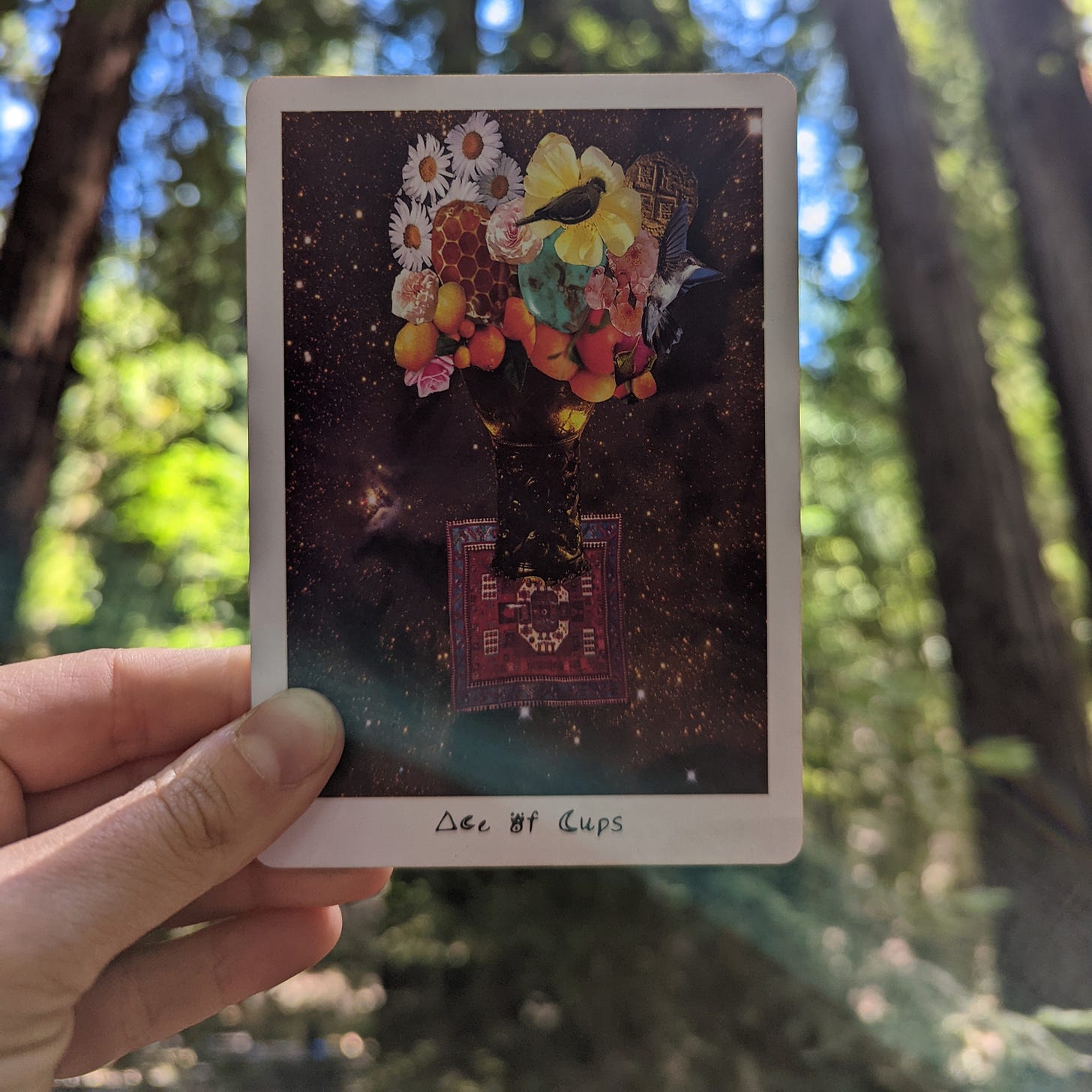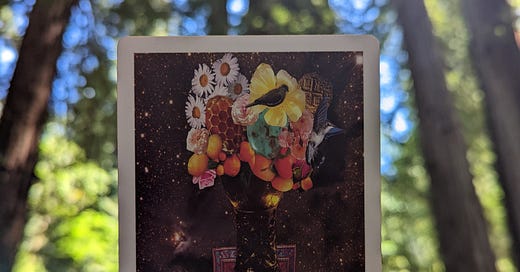Hi friends,
Earlier this week, I posted about stillness being part of the creative process on Instagram. I got a few messages about the post — how it feels so good to quiet our minds and bodies, but how little practice we have doing it. And how taboo it is to talk about slowing down, how guilt and shame pop up when we choose to do less. Especially when we’re compelled to always be doing more.
On a personal level, slowing down has meant listening deeply — to my body, to others. Putting intentional thought behind action. Noticing when I feel anxiety and getting curious about where it comes from: is this an internal recalibration of my own values and beliefs, or have I absorbed someone else’s worry, someone else’s sense of urgency? Does this feel right for me, or is this what I think I should be doing?
(I encourage everyone interested in this topic to listen to Dr. Bayo Akomolafe’s interview with For the Wild from June 2020, titled “On Slowing Down in Urgent Times.” There’s also the transcript, for those who prefer to read. A really beautiful discussion about “what happens when we unfurl into a space of slowness and relinquish human mastery to a wider cosmic net of relations.”)
This slowness, this stillness, is a new experience after years of movement. When I first started The Rebis a few months ago, I began approaching it the same way I was conditioned to approach all of my other jobs. I had a hundred tasks on a list of things to do: books to read, people to interview, endless ideas for content to create. I forced myself to scale back. One or two things at a time. Wait until I felt a full-body yes before moving forward.
Tarot helps immensely — the act of shuffling cards, touching their edges, reflecting on their symbolism. Gives my mind an opportunity to go deep, to explore one idea in a thousand different ways. Allows me to stay present for extended periods of time. Makes space for play.
Earlier this week, I was walking among some old-growth redwoods and I pulled Ace of Cups from The Lioness Oracle. A card of happiness, abundance, satisfaction. It felt fitting: I was with close friends I rarely get to see in person and the moment felt celebratory.

Alejandra León, the creator behind The Lioness Oracle, has this to say about the Ace of Cups in her companion book to the deck: “Here begins the discovery of what you love, what gives you pleasure, and what rules your heart.”
Like stillness, pleasure also seems taboo to talk about. Doing something because you’re curious, because it makes you feel good, because it makes you smile, makes your skin warm, makes your heart sing. Doing something becasue you just want to do it.
I’ve been reading Adrienne Maree Brown’s book “Pleasure Activism,” which explores the concept of recognizing pleasure as a measure of freedom — of “understanding the liberation possible when we collectively orient around pleasure.” The book is mostly about eroticism and sex, but it’s made me think a lot about tarot.
Pleasure is a big part of the reason I’m here, working on this magazine. Not because I have to do it, but because I want to. Tarot can be intense, uncomfortable, confrontational. It can unearth painful memories. But it can also bring you into deeper connection with yourself, and with others. Tarot is intimate. (And yes, it can even be erotic — especially if you’re giving someone a reading in bed, which I recommend trying.)
I’ve been reflecting on how much tarot is tied to relationships. When I pulled Ace of Cups, I thought about something that Jessica Dore wrote about in her book “Tarot for Change.” She explains how in the West, we often consider emotions to be “insular experiences that exist within individuals, an isolated phenomenon that is mine, yours, or someone else’s.” But then she poses the following questions:
“What would a more relational way of engaging with our surroundings look like? … Could we make room for the possibility that what we feel and experience in the flesh house of the body is not always rooted in a private individual experience, but comes from an ecosystem to which we belong? What if, for example, rather than seeing ourselves as taking a walk through the woods, we see ourselves as being a wave of energy rippling through the consciousness of a family of redwoods?”
I actually didn’t remember that she mentioned redwoods in this chapter of the book, and when I went to look up the exact quote, the synchronicity of pulling Ace of Cups while sitting under a cluster of redwoods made me smile big.
It also made me think: my pleasure extends beyond me and my body. The pursuit of pleasure is what encourages me to bring together people with infectious energy. The people who respond with delight when I send them half-baked ideas via Instagram DM. The people who make the beautiful tarot cards that I carry with me wherever I go. These are the people I choose to be in relationship with. These are the people I want you to know, the people whose words and work I want to share with the world. Who fill my cup with transcendent joy. Who can fill your cup, too, if you let them. (This is probably a good time to share that I’m working on a series of interviews with deck creators, including one with Alejandra León — stay tuned!)
All of this reminds me of something that famous tarotist Rachel Pollack said in her book “The Forest of Souls: A Walk Through the Tarot”:
“To learn to play seriously is one of the great secrets of spiritual exploration.”
When tarot starts to feel heavy, I’ve been inviting lightness and novelty to the way I pull cards. After all, tarot was originally a game — it had been around for centuries before people began associating tarot with esoteric practices in the 1700s. So I’ve been pulling cards freely, without spreads that might feel restrictive. Focusing on just the colors, or just the clothing on the cards. Imagining a conversation between the court characters. Pulling out the same card from five different decks, and choosing my favorite. Putting it in the back pocket of my jeans, a secret reminder.
Last week, Jarod K. Anderson wrote something that realy landed with me:
“I am forever trying to shift my creative life from a mindset of work to a mindset of play. Both work and play take effort. Both work and play require time and space. The difference is that my idea of work is haunted by a fear of imperfection, while play feels hard to get wrong.”
I like to tell people who are just getting started with tarot that there are no real “rules.” Sure, there’s a storied history and a framework that you can explore. But you also get to decide what to carry through to your own tarot practice: which interpretations resonate, what certain symbols mean to you. Work with the cards for long enough and you arrive at your own meanings.
It’s the same when it comes to creativity, for me. There is no one way to live a creative life, no set rules for art or beauty. I’ve had to decide what this looks like for myself, and it’s an expanding, evolving thing. And I’m learning just how much pleasure and play take center stage.
Happy Leo season, y’all.
Until next time,
Hannah


